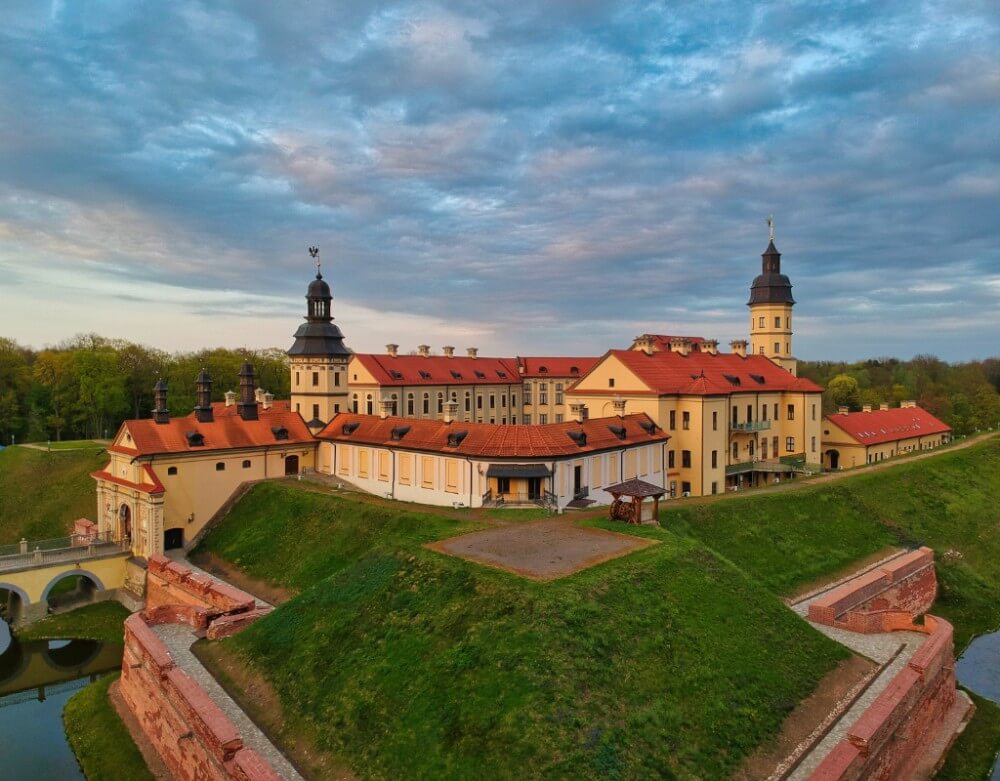
Eastern Europe is a region full of exciting nature and fascinating history.
Belarus, which has gone through long centuries of historical events, is at its heart.
Religious events, wars, dictatorships, and many other events have passed this land known as the “lungs of Europe.”
Belarus is the answer for you looking for underrated travel destinations.
This historical itinerary will walk you through castles, churches, old towns, and more exciting places in Belarus that you need to visit.
Brest Region
Kosava Castle
This castle is a ruined neo-Gothic castellated place found in the Brest region. Architect Frantisek Yascholda designed it. Kosava Castle was purchased in 1830 by Count Wojciech Puslowski and then passed on to his son, Graf Wandalin Puslowski.
In 1863, after the collapse of the January Uprising, the castle’s ownership got transferred to the hand of the Trubetskoy family, along with other Russian aristocrats. Kosava Castle was severely damaged during World War I and II and is currently under restoration.
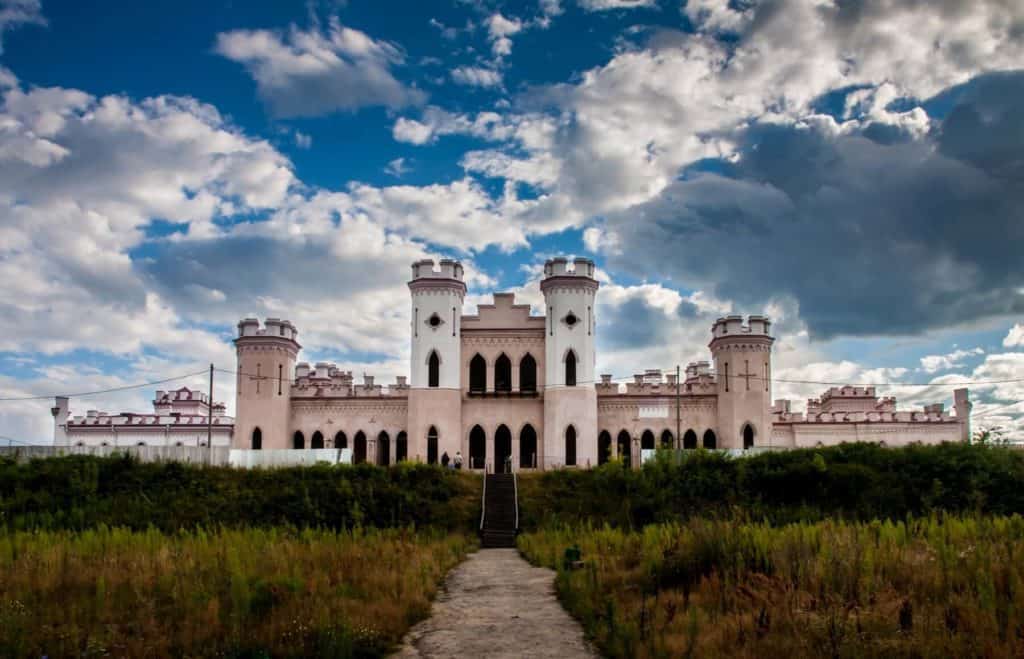
Tower of Kamyenyets
The Tower of Kamyenyets is the landmark of the Kamyenyets town of the Brest Region. It is also often called the White Tower, despite the color never being white throughout history.
Oleksa was the architect of this building, directing the construction under the order of Grand Duke Vladimir Vasilkovich. Since its foundation in 1271, the tower has gone through a lot. Kamyenyets Tower acted as a stronghold on the border of the Principality of Volhynia.
The Tower of Kamyenyets is open for visitors as a national historic site. It sits nicely by the Liasnaja river, providing visitors with a scenic view.
The landmark has also been added to the UNESCO World Heritage list since 2004, making it a must-visit for travelers in Belarus. Don’t forget to take out your camera to get some beautiful pictures.
Gomel Region
Rumyantsev-Paskevich Palace
If you want to come to a landmark featured in Belarusian money, pay a visit to the Rumyantsev-Paskevich Residence, which has high historical importance for the city of Gomel.
The former owner, Pyotr Rumyantsev, was a prominent Russian Field Marshal. The ownership was then handed over to Ivan Paskevich, who bought it from Rumyantsev’s descendant. The place became a local museum after the Russian Revolution.
The palace is worth visiting because it is a part of a complex with a beautiful park. Take a stroll at one of the most beautiful parks in Europe. It serves a captivating ambiance in any season.
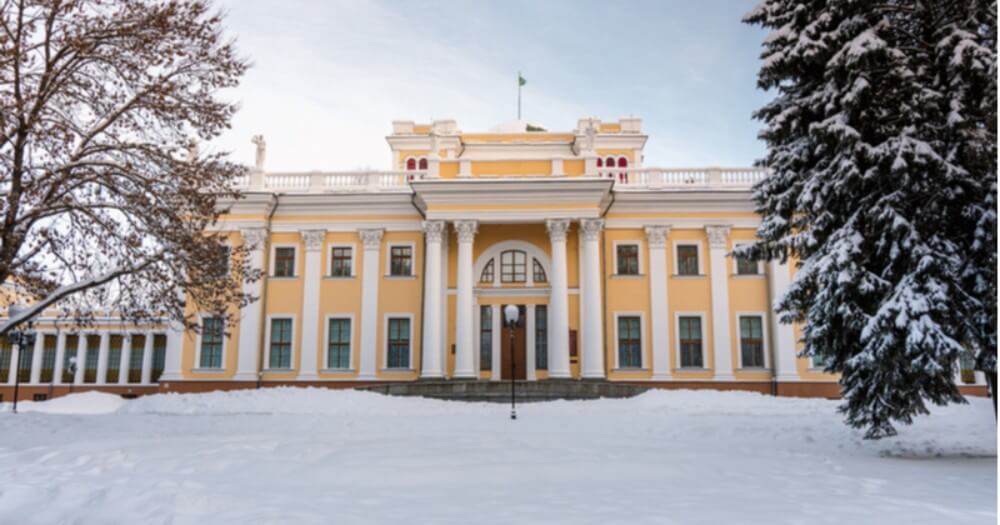
Shklyarov Vetka Museum of Old Rites and Belarusian Traditions
Take time travel to the past by visiting this unique ethnography museum in Vetka City, Gomel Region. The building looks like a tart cake with its bright pink color from the outside.
Once you get in, you will be welcomed by the extensive collection of 243 iconic Belarus historical items. Take a look and learn more about Belarus’ traditional crafts, painting techniques, weaving techniques, and more exciting things.
The museum is not very big, and you might not have high expectations when you enter. However, it’s pretty insightful as the museum supplies detailed information about each item.
Vetka Museum also offers an English-speaking tour guide, ready to walk you through every collection available. The site is half an hour drive away from Gomel City, and it’s worth the trip.
Grodno Region
Kolozha Church
Kalozha Church is another UNESCO World Heritage Site in Belarus. Kolozha Church is located in the northwestern part of 12th century Ancient Rus, now the Grodno Region of Belarus. Its unique architecture becomes the main attraction of this landmark.
The design is said to be following the style of the Byzantine temple. Kolozha Church of Sts. Boris and Gleb is the only one left from the distinctive ancient Black Ruthenian region.
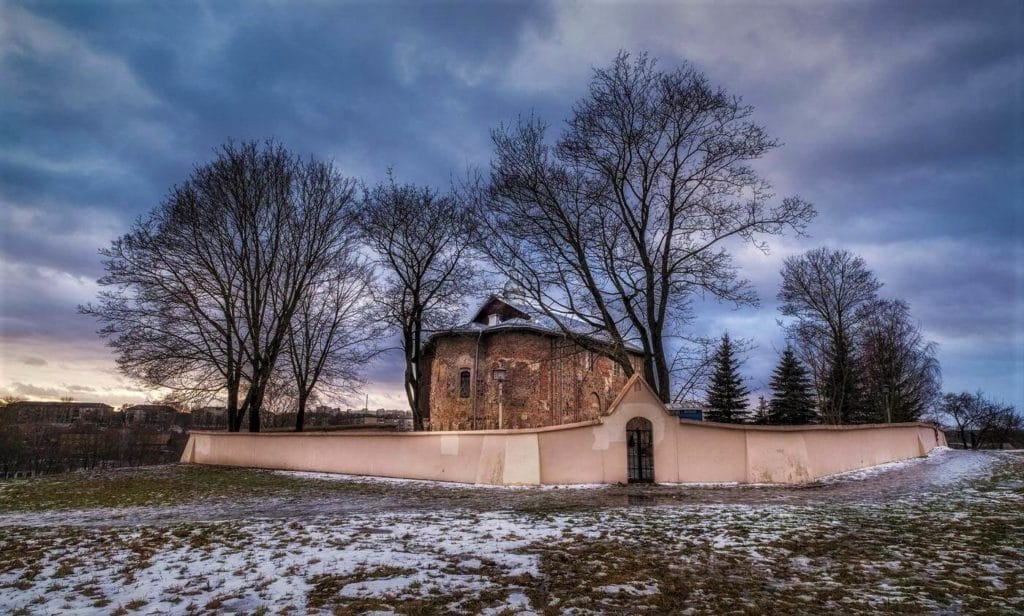
Despite its old age, the church is still running to this day. It is used for services as well as religious celebrations and Sunday school. Located by the river, your eyes will be pleased by a nice view surrounding the landmark. It’s lovely to visit a natural and historical place during your trip.
Mir Castle Complex
If you’re keen on visiting more architectural sites in Belarus, don’t skip this one. Mir Castle Complex is a fortified castle, historical landmark, and part of the UNESCO World Heritage List. It was erected in the 16th century in a 27-hectare area in the Korelichi district of Grodno. Over the centuries, its owners extended, reconstructed, abandoned, and restored the castle.
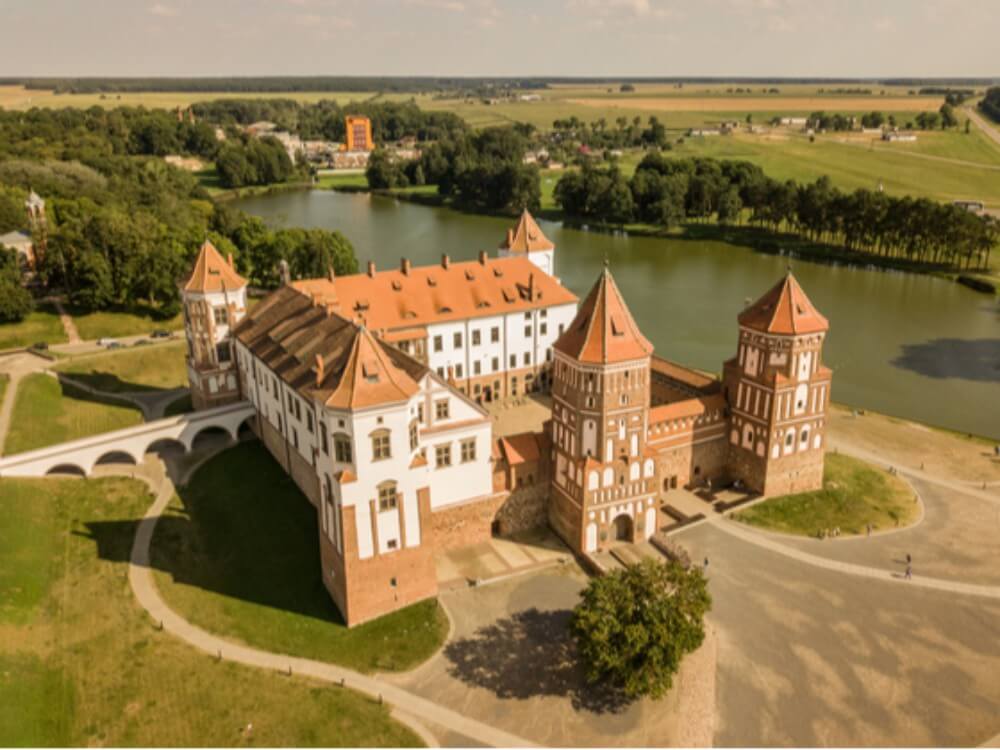
Admire its captivating mix of Gothic, Baroque, and Renaissance architecture as you set foot in front of the building. You could also enjoy many events around the complex, such as military events reconstructions, theater performances, and concerts. Get your action camera ready to capture this part of your unforgettable Belarus trip.
Zhirovichy Monastery
Feel the calming, modest ambiance as soon as you enter Zhirovichy Monastery. You will see churches painted in blue, standing for the color of the sky. The history of this monastery goes back to the year 1470 when some shepherd boys found a miraculous image of the Virgin Mary on a wild pear tree. People took it as a holy sign and immediately built a temple.
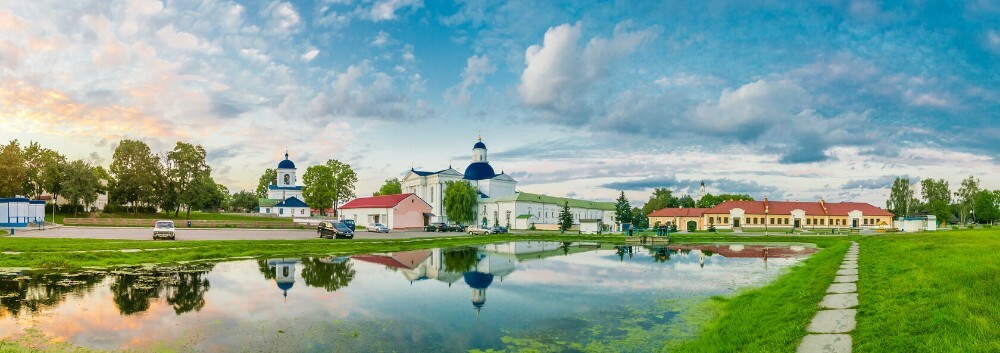
The village is home to many churches and other religious buildings. Not only that, but Zhirovichy Monastery also has a 60-hectare farm, employing around 200 workers in total.
Pilgrims visit this site for a spiritual journey, but if you’re an ordinary tourist traveling to Belarus, Zhirovichy is still worth visiting. It often becomes the holiday destination for people from bordering countries, who come to enjoy the calming silence of the town.
Minsk Region
Holy Spirit Cathedral
Like other large cities, Minsk is not only full of modern architecture, it also has various historical sights. Upper City with the Cathedral of the Holy Spirit is one of such places. This Orthodox cathedral was built in 1642 and is recognized as one of the city’s most iconic landmarks.
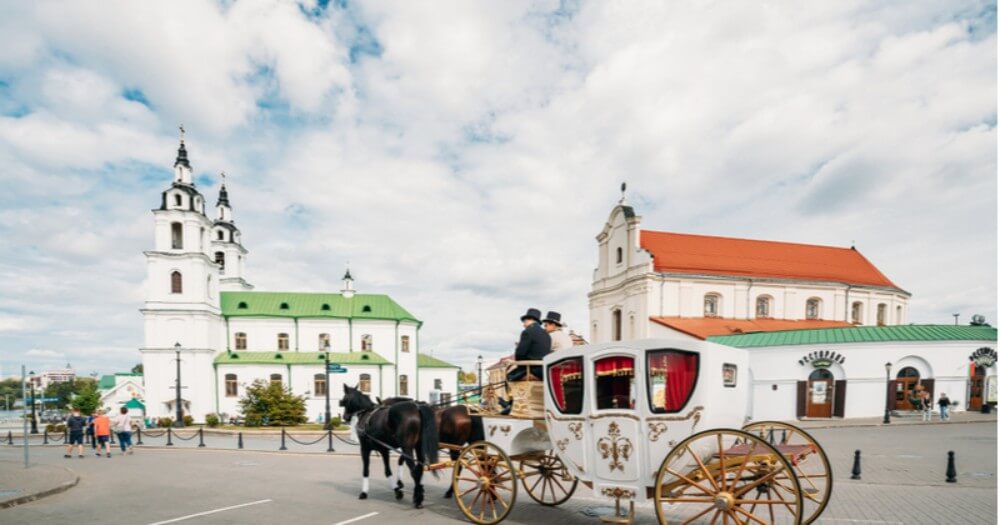
Like many historical sites in Belarus, the Holy Spirit Cathedral also went through a long period of war and hardships. It was then renovated, yet it keeps the exterior nice and simple to this day. However, don’t judge too fast; come inside and enjoy many relics and frescoes decorating the cathedral’s interior.
Church of Saint Simon and Helena
Compared to many other Belarus historical sites, this landmark is relatively new. The Roman Catholic church, also known as Red Church, was built in the early 20th century by then-famous Edward Woynillowicz. Edward and his wife took their early deceased kids’ names as an inspiration in naming the church. Edward and his wife were later buried in the church complex in 2006.
Under the Soviet government, the church was used as a cinema and film studio. Nowadays, it has come back to its original purpose. Christians can attend prayers available in Belarusian, Polish, Lithuanian, and Latin. The Red Church is now a hub of religious, social, and cultural activities in the heart of Minsk, so don’t forget to pay a visit.
Check our guide to local things to do in Belarus

Saved as a favorite, I love your blog!